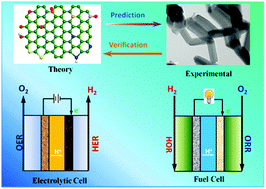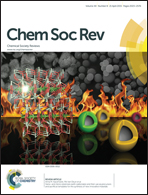Design of electrocatalysts for oxygen- and hydrogen-involving energy conversion reactions
Abstract
A fundamental change has been achieved in understanding surface electrochemistry due to the profound knowledge of the nature of electrocatalytic processes accumulated over the past several decades and to the recent technological advances in spectroscopy and high resolution imaging. Nowadays one can preferably design electrocatalysts based on the deep theoretical knowledge of electronic structures, via computer-guided engineering of the surface and (electro)chemical properties of materials, followed by the synthesis of practical materials with high performance for specific reactions. This review provides insights into both theoretical and experimental electrochemistry toward a better understanding of a series of key clean energy conversion reactions including oxygen reduction reaction (ORR), oxygen evolution reaction (OER), and hydrogen evolution reaction (HER). The emphasis of this review is on the origin of the electrocatalytic activity of nanostructured catalysts toward the aforementioned reactions by correlating the apparent electrode performance with their intrinsic electrochemical properties. Also, a rational design of electrocatalysts is proposed starting from the most fundamental aspects of the electronic structure engineering to a more practical level of nanotechnological fabrication.

- This article is part of the themed collection: RACI100: Celebrating Australian Chemistry

 Please wait while we load your content...
Please wait while we load your content...